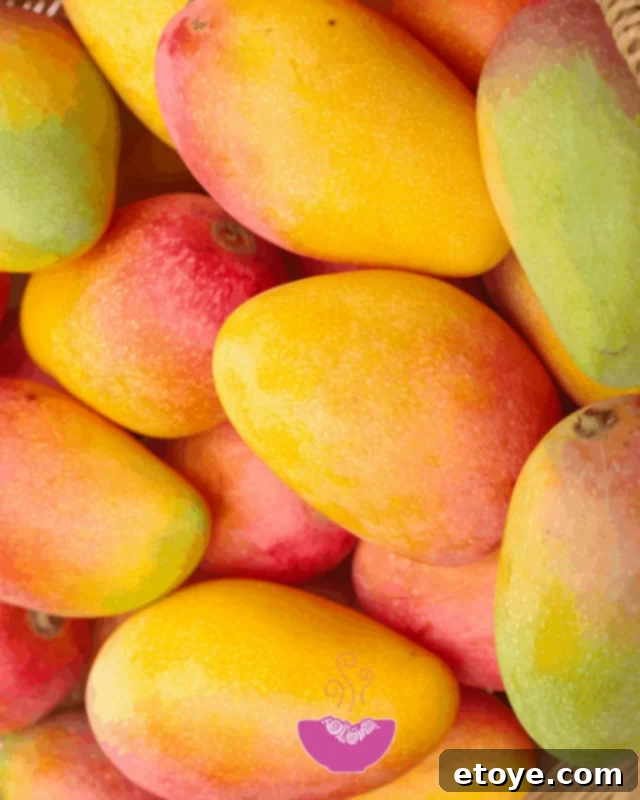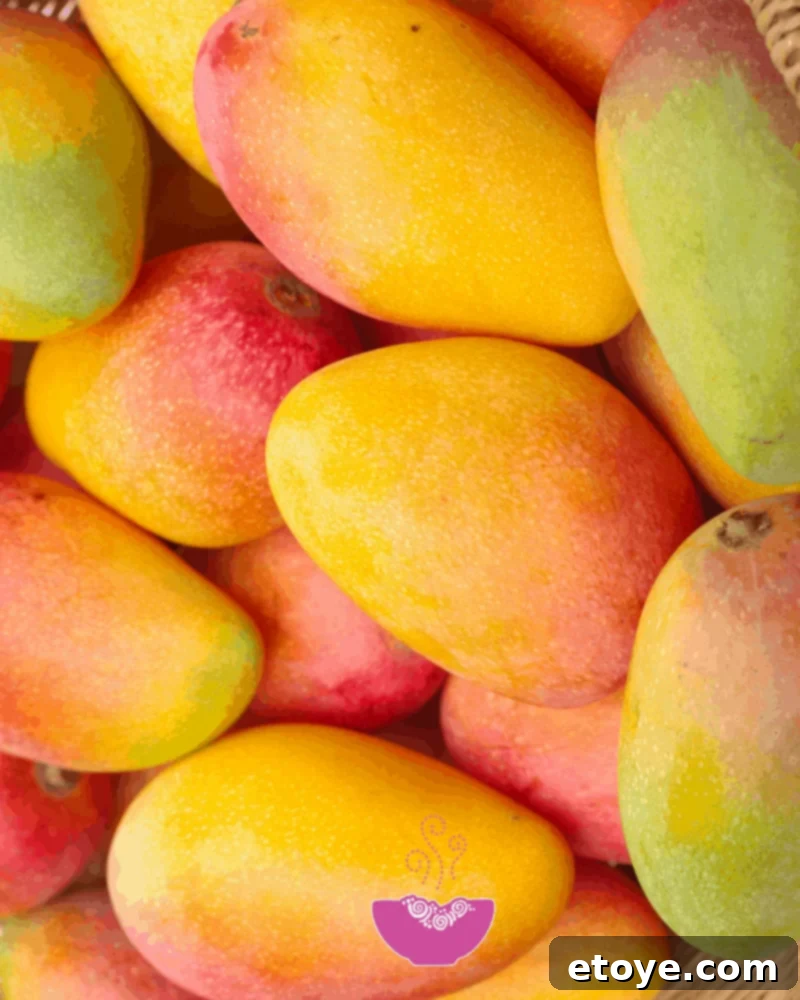Mastering the Mango: A Sweet Guide to Effortless Cutting for Your Buddha Bowl and Beyond
There’s nothing quite like the tropical kiss of a perfectly ripe mango. Its vibrant color, intoxicating aroma, and unparalleled sweetness can transform any dish, especially a wholesome Buddha Bowl, into an exotic delight. However, for many, the joy of a fresh mango is often overshadowed by the daunting task of cutting it. Those slippery skins and that large, elusive pit can seem like a formidable challenge. But fear not! This comprehensive guide will demystify the art of mango cutting, ensuring you can enjoy this succulent fruit safely and efficiently, adding a burst of flavor and nutrition to your meals.

The Allure of Buddha Bowls and Why Mangoes Belong
Buddha Bowls have taken the culinary world by storm, and for good reason. These vibrant, nourishing meals are essentially a balanced plate of grains, proteins, vegetables, and a delicious dressing, all artfully arranged in a single bowl. They’re not just aesthetically pleasing; they’re incredibly versatile, customizable, and a fantastic way to incorporate a spectrum of nutrients into your diet. The beauty of a Buddha Bowl lies in its simplicity and the freedom to experiment with various ingredients, making it an ideal canvas for creativity in the kitchen.

So, where does the humble mango fit into this wholesome picture? Perfectly! The addition of fresh mango slices or cubes introduces a delightful counterpoint to the savory elements of a Buddha Bowl. Its natural sweetness, slightly tangy notes, and soft, buttery texture complement grains like quinoa or brown rice, crunchy vegetables, and protein sources like grilled chicken or chickpeas. Beyond taste, mangoes infuse your bowl with a stunning pop of color, elevating the visual appeal and making your healthy meal even more enticing. Learning how to properly prepare this tropical gem is a simple kitchen skill that will help you save food, time, and money by maximizing every delicious bite.
The Nutritional Powerhouse: Why Fresh Mango is the Best Choice
Beyond its irresistible taste, the mango is a nutritional powerhouse, packed with vitamins, minerals, and antioxidants that contribute to overall health and well-being. Incorporating fresh mango into your diet, especially when it’s in season, offers a multitude of health benefits:
- Rich in Vitamin C: Mangoes are an excellent source of Vitamin C, a powerful antioxidant essential for a healthy immune system, skin health, and collagen production.
- High in Antioxidants: Beyond Vitamin C, mangoes contain other beneficial antioxidants like mangiferin, catechins, and quercetin, which help protect your cells from damage caused by free radicals.
- Digestive Health: With their significant fiber content, mangoes aid in healthy digestion, promote regularity, and contribute to a feeling of fullness.
- Eye Health: Mangoes contain Vitamin A and beta-carotene, crucial for maintaining good vision and preventing age-related macular degeneration.
- Heart Health: The fiber, potassium, and vitamins in mangoes all contribute to supporting cardiovascular health.
- Versatile and Delicious: Whether enjoyed on its own, blended into smoothies, or added to savory dishes, mangoes are incredibly versatile and universally loved for their unique sweet and savory profile.
- Seasonal Delight: While available year-round in many regions, mangoes are particularly flavorful and abundant during their peak season, typically from May to September. Enjoying them in season means you’re getting the freshest, most vibrant fruit.
Selecting and Storing Your Perfect Mango
Before you even pick up a knife, choosing the right mango is key to a delicious experience. A perfectly ripe mango offers the best flavor and texture. Here’s how to pick one and keep it fresh:
How to Choose a Ripe Mango:
Unlike some fruits, color isn’t always the best indicator of ripeness for a mango. Instead, rely on these senses:
- Feel: Gently squeeze the mango. A ripe mango should yield slightly to pressure, similar to a ripe avocado or peach. Avoid mangoes that are too hard (underripe) or too soft and mushy (overripe).
- Smell: Bring the mango to your nose, especially near the stem end. A sweet, fruity aroma is a good sign of ripeness. If it smells sour or alcoholic, it’s likely overripe.
- Look: While color varies by variety, look for mangoes with smooth skin, free from major blemishes or bruises. Red blush on some varieties like Tommy Atkins is an indication of sun exposure, not ripeness.
Ripening and Storing Mangoes:
- To Ripen: If your mango is firm, leave it at room temperature on your kitchen counter. To speed up the process, place it in a paper bag with an apple or banana, which release ethylene gas – a natural ripening agent. Check daily.
- To Store Ripe Mangoes: Once ripe, whole mangoes can be stored in the refrigerator for up to five days to prolong their freshness.
- Storing Cut Mangoes: After cutting, store mango pieces in an airtight container in the refrigerator for up to 2-3 days. For longer storage, freeze mango cubes on a baking sheet and then transfer them to a freezer-safe bag, where they can last for several months.
Essential Tools for Mango Cutting
You don’t need fancy gadgets to conquer a mango. A few basic kitchen tools are all you’ll require:
- Sharp Chef’s Knife: A good, sharp knife is your most important tool. It makes the cutting process safer and more efficient.
- Paring Knife: Useful for peeling the skin off around the pit and for precision cuts.
- Cutting Board: A sturdy cutting board is essential for safety and stability. Consider placing a damp paper towel underneath to prevent it from slipping.
- Spoon: A regular kitchen spoon is perfect for scooping out the flesh.
How to Cut a Mango – A Step-by-Step Guide
Ready to tackle that slippery fruit? Follow these steps for a clean, safe, and efficient mango cutting experience. The goal is to navigate around the large, flat, oval-shaped pit in the center.
- Prepare Your Mango: Start by thoroughly washing and scrubbing the mango under cool running water. This removes any dirt or residues from the skin. Pat it dry with a clean towel. Place the mango on your cutting board, stem side up.
- Locate the Pit and Cut the “Cheeks”: The mango pit is flat and oblong. Imagine it running vertically through the center of the fruit. To cut the “cheeks” – the two largest fleshy sides – stand the mango upright with the stem end facing up. Carefully slice downwards, about a quarter of an inch away from the center line, feeling for the pit. Repeat on the other side, aiming to cut as close to the pit as possible to maximize your yield. You should now have two large, seedless halves and a smaller middle section containing the pit.
- Score the Mango Flesh (Method One – Preferred for Cubes): Take one of the mango “cheeks.” With a paring knife or the tip of your chef’s knife, score the flesh in a crosshatch pattern, creating horizontal and vertical lines, without cutting through the skin. Aim for cubes of your desired size.
- Scoop Out the Cubes: Once scored, gently bend the mango cheek backwards (like turning it inside out). The scored cubes will “pop up” from the skin. Use a spoon to carefully scoop out the cubes from the skin into a bowl. Repeat with the second cheek. This method is excellent for getting uniform cubes for Buddha Bowls or salsas.
- Alternatively: Scoop First, then Cut (Method Two – Simpler for Slices/Mash): If you prefer not to score, you can simply use a spoon to scoop the entire flesh out of each cheek after step 2. Once scooped, place the flesh on your cutting board and slice it into strips or dice it into cubes as desired. This method is great if you plan to blend the mango for smoothies or mash it for sauces.
- Addressing the Remaining Flesh Around the Pit: Don’t waste the delicious mango still clinging to the pit! Hold the pit section upright on your cutting board. Use a paring knife to carefully peel away the skin from the remaining narrow strips of flesh on all sides. Then, slice this flesh away from the pit. Be extra cautious as you work around the irregular shape of the pit.
- Final Touches: Discard the skin and pit. Your freshly cut mango is now ready to be enjoyed!

Safety Tips for Mango Cutting
- Sharp Knife is a Safe Knife: A dull knife requires more force, increasing the chance of slipping and injury. Always use a sharp knife.
- Stable Surface: Ensure your cutting board is stable and doesn’t slide. A damp paper towel or non-slip mat underneath can help.
- Proper Grip: Hold the mango firmly with one hand, keeping your fingers tucked away from the knife’s path. Use a “claw” grip with your non-dominant hand, curling your fingertips inward to protect them.
- Take Your Time: Don’t rush the process, especially when working around the pit.
Beyond the Buddha Bowl: Creative Ways to Use Fresh Mango
Now that you’re a mango-cutting pro, the possibilities are endless! Here are some ideas to inspire you:
- Smoothies and Juices: Blend frozen or fresh mango chunks with yogurt, milk, or other fruits for a refreshing and nutritious drink.
- Salsas: Combine diced mango with red onion, cilantro, jalapeño, lime juice, and a pinch of salt for a vibrant and zesty salsa perfect with grilled fish, chicken, or tortilla chips.
- Desserts: Add mango to fruit salads, make a tropical pavlova, or create a delicious mango sticky rice.
- Salads: Beyond Buddha Bowls, mango adds a sweet and tangy element to green salads, especially those with shrimp, avocado, or grilled chicken.
- Marinades: The enzymes in mango can help tenderize meat, and its sweetness adds a fantastic flavor to marinades for poultry or pork.
- Snack Time: Simply enjoy the fresh mango pieces on their own for a healthy and satisfying snack.
Troubleshooting Common Mango Cutting Challenges
- Slippery Mango: If your mango feels particularly slippery, try holding it with a clean, dry kitchen towel for a better grip while cutting the cheeks.
- Overripe Mango: If your mango is very soft, the scoring method might be messier. In this case, simply scoop out the flesh with a spoon and then dice or mash it. Overripe mangoes are excellent for smoothies, sauces, or purees.
- Difficult Pit: Some mango varieties have stringier flesh around the pit. Don’t worry about getting every last speck; prioritize safety over a tiny bit of fruit.
With these tips and techniques, cutting a mango will no longer be a source of hesitation but a delightful step in your culinary journey. Embrace the vibrant flavors and incredible health benefits this tropical fruit offers. Whether it’s the star of your next Buddha Bowl or a sweet addition to any meal, perfectly cut mango is now within your reach.
If you’ve tried cutting a mango using these methods, or experimented with any other tips or recipes from my blog, please take a moment to rate this guide and share your experience in the comments below! Your feedback is invaluable.
